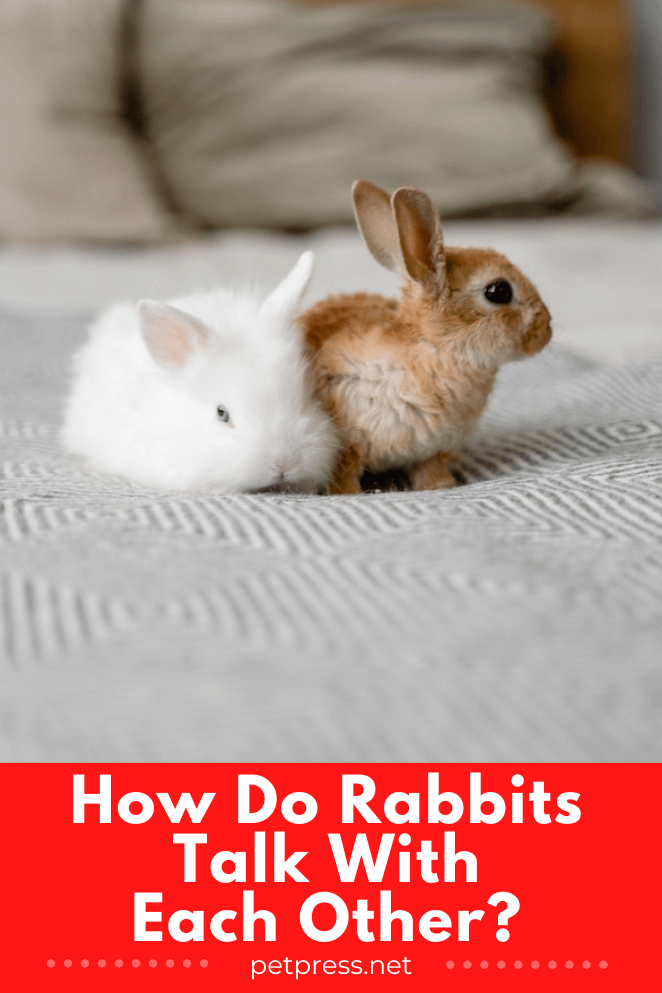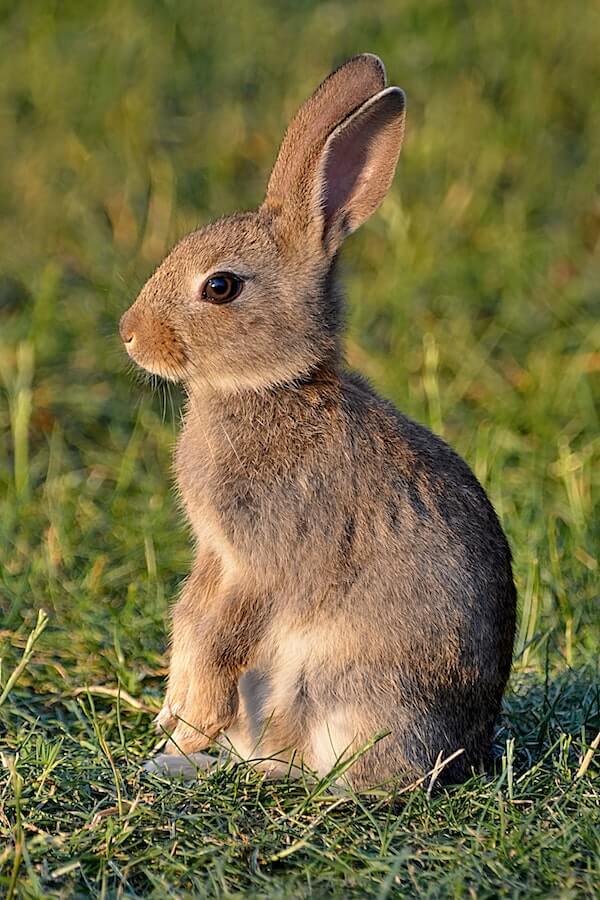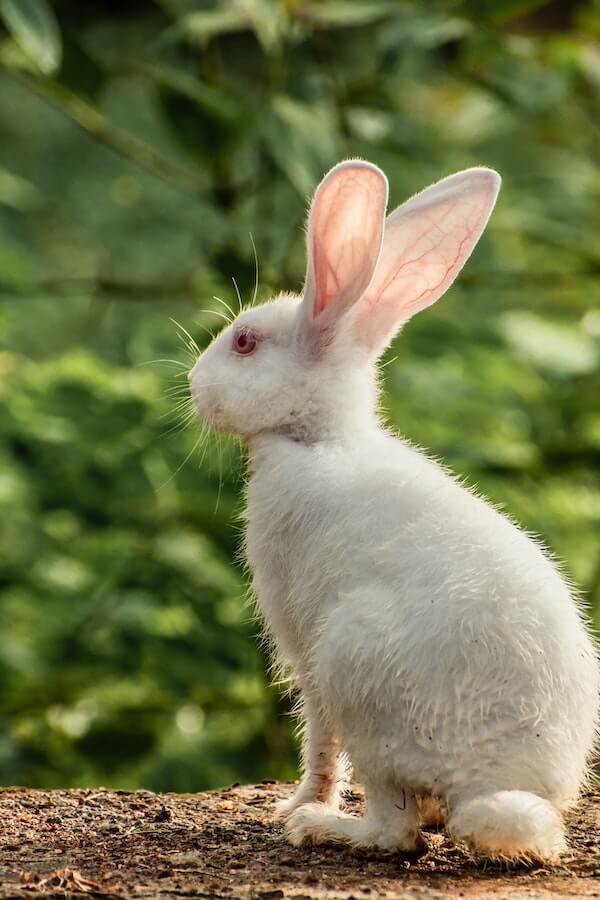
Do rabbits communicate within themselves? If yes then how do rabbits talk with each other?
Rabbits are surprisingly communicative animals. Despite their small size, they have a variety of ways to communicate with each other.
From simple vocalizations to gestures and movements, rabbits have developed their own complex language that allows them to communicate with one another.
So if you are planning to buy a rabbit, this is one of the few questions that you need to ask the rabbit breeder to know your pet better.
Let’s take a closer look at the fascinating world of rabbit communication!
Do pet rabbits talk to each other?
Rabbits are social creatures, and they use body language to indicate a range of emotions. If two rabbits are getting along well, they may groom each other or cuddle up close together.
On the other hand, if a rabbit is feeling threatened or angry, it may thump its foot or fluff its fur as a warning sign to the other bunny.
These subtle signals show that rabbits understand each other’s needs and intentions without saying a word.
How do rabbits talk with each other?

Rabbits may seem like they are silent, but did you know that they actually have a lot to say?
They communicate with each other through a range of means. Here are 10 ways in which rabbits communicate:
1. Scent Marking:
Have you ever seen two rabbits doing a little dance, snuggling noses, and then sprinting off in separate directions? Well, if you have, then you’ve likely witnessed rabbit scent marking in action.
This is a sign of affection and recognition—a kind of “hello” between bunnies. Rabbits use scent marking to let others know their whereabouts and to assert their own territorial boundaries.
By rubbing its chin on grass, furniture, or even you (it’s really not that weird!), your bunny is leaving behind a special smell from glands located around its mouth and chin.
It’s almost like signing a name tag! Once the smell has been left behind, other rabbits recognize it as an indication of presence.
And just like that, your pet rabbit is saying “hello” to the world.
2. Body Language:
Rabbits use body language to communicate with each other and with their owners.
They have a wide range of gestures that they use to express themselves, from thumping the ground when alarmed or excited, to nibbling as an invitation for affection.
Rabbits also rely on subtle changes in posture and facial expressions to convey different messages.
For instance, a rabbit who is feeling friendly might sit up taller, while one who is threatened may crouch down low.
By observing your pet’s movements and expressions, you can gain valuable insight into how they’re feeling and what they want.
So next time you spot your furry friend twitching its nose or wiggling its ears, pay attention – it might be trying to tell you something!
3. Vocalizations:
Rabbits are among the few animals who have mastered the art of vocalizing in order to communicate with each other.
So what kind of vocalizations do rabbits make?
Well, depending on their mood or situation, rabbits can produce a wide range of sounds such as purring, chirping, thumping and hissing.
All these noises have different meanings and intentions from one rabbit to another. For example, purring is generally seen as a sign of contentment while chirping might indicate excitement or pleasure.
Likewise, thumping could be used to warn other rabbits of danger and hissing can be a sign of aggression.
4. Grooming:

Rabbits are very communicative animals, and one of the ways they express themselves is through grooming.
Whether it’s offering a reassuring groom to a frightened bunny or taking turns in an affectionate session, rabbits use their tongues to detect subtle changes in emotions and social interactions.
Each hair stroke is like a little love message – think of it as rabbit-speak for “I care about you”!
5. Chewing:
Chewing isn’t only a habit to help keep your rabbit’s teeth healthy and trim, it’s also a way of communication between bunnies!
Depending on the type of chewing, rabbits can be sending different signals to each other.
If a rabbit is gently chewing something with its front incisors (the ones at the front) it could mean that they’re in an exploratory mode; if they are more fiercely or hastily chewing something with their cheek teeth (the molars at the back) then it could mean frustration.
6. Tail Flicking:
This is typically done when a rabbit wishes to express its disapproval of something else and wants the other bunny to stay away!
Tail flicking is as natural to rabbits as it gets. It’s their way of saying hello and goodbye, and even more!
This amazing communication tool helps them exchange messages with each other, from expressing joy to alerting danger in the environment. It’s a true testament to the power of body language!
By observing their tails closely, you can get an idea of what your rabbit is trying to express. A short twitch might mean they are feeling content, while longer flicks signify agitation or excitement.
7. Chasing/Sparring:
Chasing and sparring in rabbits is not just a way of letting off steam – it’s also their language.
When they zip around one another like balls of fluff, they’re exchanging important messages about who’s boss and who gets to go first.
8. Binky:

Binky is the most important language for rabbits and it’s used to communicate with each other.
It’s like a dance, where one rabbit hops around in circles and then jumps up into the air. Pretty cute, right?
But actually, there’s a lot of hidden meaning behind this behavior.
Rabbits may be using Binky to express their emotions or show that they’re feeling playful. Or sometimes they use it to tell another rabbit that they are happy or excited.
9. Thumping:
If a rabbit thumps its hind feet rapidly, it’s likely expressing anger or warning others of potential danger nearby.
Rabbits have their own language – thumping.
As a way of communicating with each other, rabbits will tell each other when they’re excited, scared, or even angry – all with the power of their back legs!
By thumping their hind feet on the ground, rabbits send out vibrations that travel through the dirt which can be heard by nearby bunnies.
So if you ever find yourself near some hopping around rabbits, don’t be alarmed; they’re just having a chat!
10. Posture/Gestures:
A talented rabbit can convey excitement, hesitance, and even submission through body language alone!
If you watch your furry companion closely enough, you’ll notice that they assume different postures depending on the situation.
For example, when they’re feeling bold or assertive, they might stand up tall with their ears erect and their noses pointed forward.
On the other hand, if they want to show submission or fear towards another bunny then they might sit low on their paws and tuck their chin in.
Final Thoughts

Who knew rabbits could be so chatty? How do rabbits talk with each other? Well, now you know!
So next time you see some furry friends in your garden, listen closely and see if you can decipher what they’re trying to say.
It may be harder than you think, but you might just understand them better than ever before!


GIPHY App Key not set. Please check settings